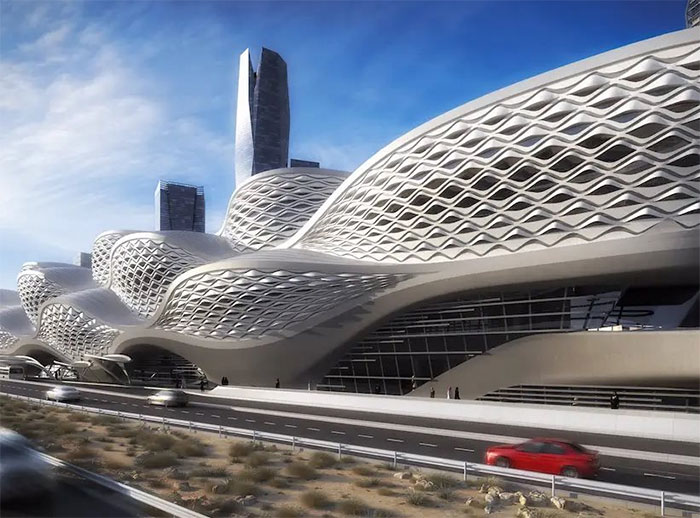Asian superpower builds an 'underground transportation' system that is likened to the 'space age' that surprises the world
This is known as one of the largest subway systems in the world and shows the development stature of this country .
Stretching 175km across a desert city, the $22.5 billion Riyadh Metro is astonishingly advanced. However, it is not only a big project but also shows the image of Saudi Arabia as a progressive, modern country, The Wall Street Journal (WSJ) reported.
Over the past decade, the country has invested billions of dollars of its oil revenue into building majestic structures that can last for a long time.
Accordingly, Saudi Arabia is said to be preparing to host two world-class events - both of which can bring revenue and tourism growth to the country. Therefore, completing this train project has become a race.

Electric trains will not need a driver but will be automated. (Illustration)
According to WSJ, the Riyadh metro network includes 6 lines, 85 transfer stations and 175km of tracks stretching across a city built on sand. Electric trains will not need a driver but will be automated.
It was originally expected to open in 2019, after five years of construction. Currently, the project is also expected to be completed soon this year.
It is known that most of Riyadh Metro's contracts were signed in 2013. Architecture, engineering and construction firms around the world competed to be part of the project with a budget of 22,000 USD. This 5 billion USD. Among those selected are some highly reputable firms such as Zaha Hadid Architects. Accordingly, Zaha Hadid said she designed the project in a 'space age' style.
Ultimately, more than 30 international and local companies and many other suppliers and subcontractors were selected for the project.
A few years ago, within the framework of the subway system, some images of a splendid central station like a 5-star hotel were revealed.
The main facade of the station is designed to receive maximum light while still blocking the scorching heat of the desert sun. Inside, the interior is luxurious with marble walkways.
Riyadh is a city with great ambitions. Since the 70s, the city has used the country's oil profits to expand its infrastructure. Riyadh has undergone some major changes since then. Like the rest of the Bay Area, this city still has a strong car culture, partly because it gets really hot when walking.

Building such a huge subway system also brings many challenges. (Illustration).
But if you look further into the future, these car-intensive cities aren't exactly at the forefront of innovation. Now, new electric and driverless public transportation systems are a suitable investment for the future.
Crown Prince Mohammed bin Salman wants to turn the capital Riyadh into an international business center, which will double its population by 2030. If the country wants to have the opportunity to promote growth as well as create an image on the international stage, Hosting a major world event is a pretty good start.
It is known that Saudi Arabia has won the right to host the 2030 World Expo - expected to welcome tens of millions of tourists from more than 100 countries. The country is also a leading candidate to host the 2034 World Cup.
However, building such a huge subway system also brings many challenges. The necessary materials must be able to withstand the effects of fluctuating temperatures. On the Riyadh metro system, train carriages will also have to be specially designed to withstand extreme heat and sand.
Three giant tunnel boring machines were used to bore and excavate 40% of the route that runs beneath the city, having to 'weave' around existing building foundations and utilities. There are also regulations that prohibit workers from working certain hours at times when temperatures are dangerously high.
- The story strayed into the underground world of the 5-year-old boy, confusing the scientists
- The model runs 241 km / h under Elon Musk's underground road
- China builds world's deepest high-speed rail station
- Explore the huge sewer system in Tokyo
- Boeing will transport passengers to space
- Break into the London subway system more than 100 years ago
- The most terrifying spooky characters in Asian legends
- Asian countries will launch a universal space satellite
- 5 most daring traffic projects in the world
- Israel discovered 2,700 years of underground water tank
- Discovered 'underground freshwater sea' under the Amazon underground
- What is Hyperloop and is it the future of transport?
 Norway built the world's tallest wooden tower
Norway built the world's tallest wooden tower Kremlin
Kremlin Ashurbanipal: The oldest royal library in the world
Ashurbanipal: The oldest royal library in the world Decoding the thousand-year construction of Qin Shihuang shocked the world
Decoding the thousand-year construction of Qin Shihuang shocked the world